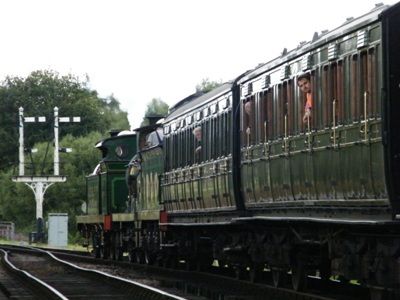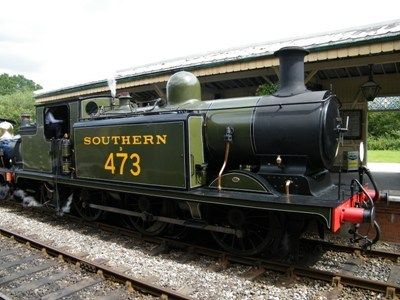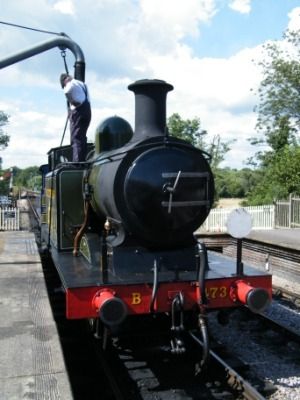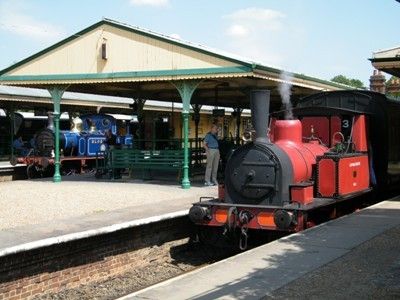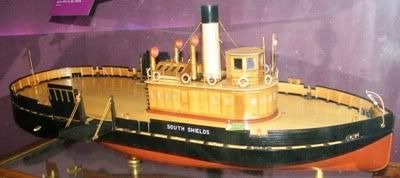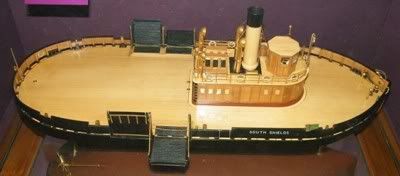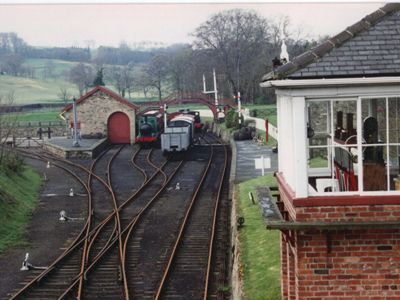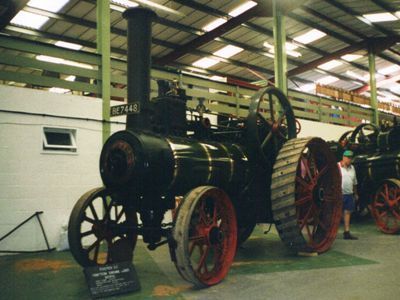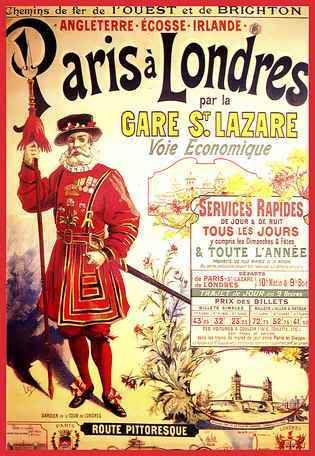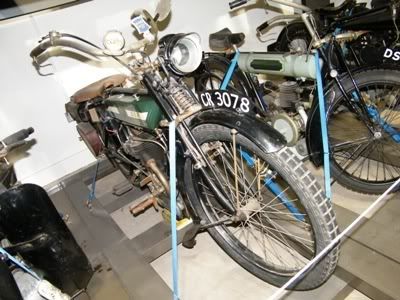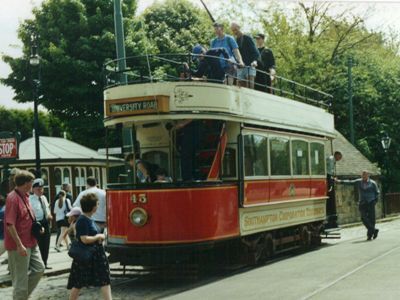H Class 263 of 1905
After a number of years out of service, the Bluebell Railway's 1905 built H Class steam locomotive 263, built in Ashford, Kent for the South Eastern & Chatham Railway, returned to service this past weekend. To celebrate, the Bluebell Railway which is in Sussex and has a large collection of Victorian and Edwardian locomotives and rolling stock, had a bit of a mini-event.
H Class 263 and C Class 592 lead a train out of Sheffield Park
Train consisting of 1900 built Metropolitan Railway coaches led by P Class 323 and E4 Class B473
Five locomotives were in service, the oldest dating form 1877 and the youngest from 1910. They were;
1877 built 'Captain Baxter' Fletcher Jennings built 0-4-0T industrial tank engine
1898 built London, Brighton & South Coast Railway (LBSCR) number B473 0-6-2T E4 Class tank engine (originally numbered 473 and named 'Birch Grove' in 1920's Southern Railway olive green
1902 built South Eastern & Chatham Railway (SECR) number 592 0-6-0 C Class tender engine in original SECR livery
1905 built South Eastern & Chatham Railway (SECR) number 263 0-4-4T H Class tank engine in original SECR livery
1910 built South Eastern & Chatham Railway (SECR) number 323 0-6-0T P class tank engine 'Bluebell' in preservation Bluebell Railway blue livery, similar to the original SECR livery
E4 Class B473 of 1898
P Class 323 'Bluebell' of 1910
Another 1910 built P class, 178, was also due to operate but unfortunately came out of service with a problem the week beforehand. Most of the carriages used were built in the Victorian or Edwardian era. More photos will follow of the individual Edwardian engines and rolling stock, so these serve as a taster for a superb preserved railway with a great late Victorian/Edwardian atmosphere and is well worth a visit, especially with such a large number of Edwardian era locomotives in use. Out of all the preserved railways in the UK there's very few where you can ride in wooden Victorian/Edwardian carriages, and especially behind a suitable locomotive too
C Class 592 of 1902
B473 getting a top-up of water
1877 built 'Captain Baxter' with P Class 'Bluebell'


